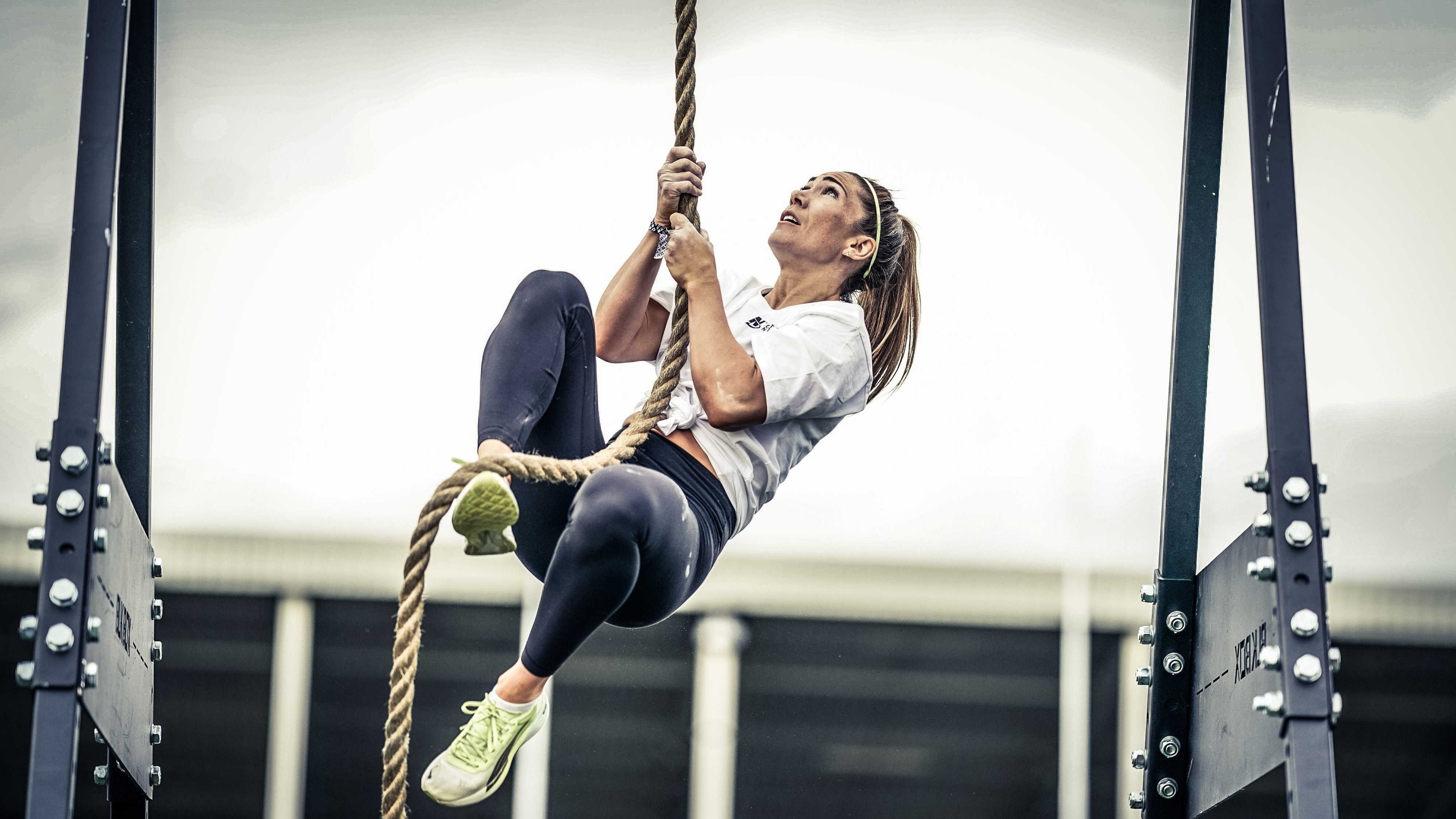5 Things I Learned Training With CrossFit Games Athlete Megan Lovegrove
The UK’s Fittest Woman of 2020 shares some of the winning approaches that got her to the podium

You can always learn something from watching the world’s leading athletes perform, but when you get to train with them you take away a whole lot more. Megan Lovegrove is a world-class CrossFit athlete, having competed in the European regionals three times both as an individual and as part of a team – a team that won regionals and got to the Games in 2021. Coach got the chance to meet her at a community workshop ahead of the CrossFit Games, hosted by Optimum Nutrition. Here are five really simple tips Lovegrove offered that anyone can apply to their training.
1. Prioritise Recovery
Anything’s possible with the right training and mindset, but the faster you recover, the greater capacity you have to bring your A-game. Lovegrove says that too often budding CrossFitters go full throttle when they’re starting out in the sport. The consequence? Premature burn-out. To avoid this, take a deliberate approach towards recovery.
Lock in the habit of having a balanced breakfast every morning to make sure you’re well fuelled, get to bed an hour earlier, or perhaps enjoy some downtime with friends. Recovery can look different for each of us, and the key is to crack the method which works best for you.
2. Decide When You’re All In
Before committing to a goal, ask yourself “When am I all in?” For Lovegrove, that means training takes the lead during competition periods, but in the off-season she will prioritise friends and socialising (still training, but at a lower intensity instead). Looking at things in this way allows space for life to happen.
3. Sync Your Training With Your Life
While those of us with regular jobs have limited time to train, we can work on getting the most out of the hours we do have available. Lovegrove’s advice is to make your busiest day of the week your lightest day of training. This might mean steady-state cardio or a mobility workout – just don’t expect to hit your threshold.
4. Be Realistic
If you’re following a training plan, it’s unlikely that all the sessions will go exactly to plan – you might not hit the weights or the pace you’ve been set, or maybe you just can’t get those toes to the bar. On these days, Lovegrove will cut the session short, eat, then return to the workout having asked herself: what’s a realistic win for today?
If you sense things aren’t going to plan, consider taking the weight down, doing fewer sets or slowing the pace. Make your main priority the quality of the session.
Get the Coach Newsletter
Sign up for workout ideas, training advice, reviews of the latest gear and more.
5. Delegate Responsibility
This is something Lovegrove recommends for those who are serious about competing. This might mean finding a coach or a nutritionist to set a plan and hold you to it, or getting a physiotherapist who can remove the question of what’s a serious injury and what’s a minor niggle you can work around. Handing over this responsibility can remove the risk of overthinking things or misdiagnosing our weak points. Regularly working with a physiotherapist was a revelation for Lovegrove: “The moment I stopped asking if I was injured, I started to feel better!” she says.

Ellë (pronounced Ell-ee) Bolland is a health and fitness writer covering news, trends and products, and has contributed to 365 Magazine and Red.
